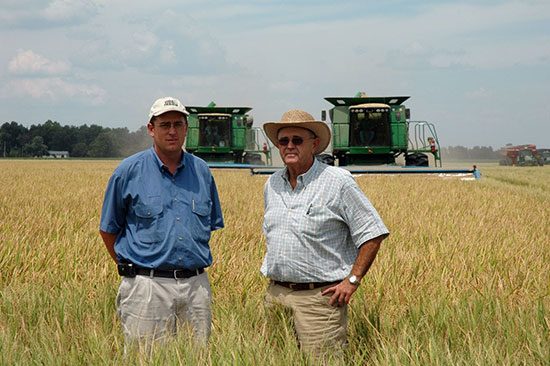April 30, 2021
At the Risk Management Agency (RMA), we pride ourselves on the support and economic safety net we provide to American agriculture and rural communities through crop insurance. It is one of the most successful and enduring government programs and a critical source of relief to producers following natural disasters or particularly bad crop years.
All Federal crop insurance policies require producers to follow good farming practices. These include methods that are generally recognized by agricultural experts as appropriate for your area. Over the last decade, we have seen new practices introduced that support farm conservation, such as the use of cover crops and no-till. As new farming practices become widely adopted, USDA studies these methods and determines if the data supports their continued use and designation as a good farming practice. RMA may then work to accommodate these adaptations by producers. Rice producers have developed two relatively new methods of cultivation over the last few decades which have grown in popularity and demanded the attention of USDA.
One of these methods is called Alternate Wetting and Drying (AWD), sometimes referred to as intermittent flooding, which saves water without negatively impacting crop yield. AWD consists of flooding a field to a reasonable depth and allowing the flood to naturally subside to the soil surface via infiltration and evapotranspiration. Methane gas emissions are reduced when AWD flooding is practiced where the soil becomes aerobic for a short period of time.
Rice has historically been grown in ponded conditions, but another practice called furrow irrigation eliminates the need to maintain an even layer of water on the field for the entire season. Instead, small channels – or furrows – are dug between the rows and carry water to the crop. Both AWD and furrow irrigation have been found to reduce water use, and reduce the carbon footprint of production while maintaining yields. USDA’s Natural Resources and Conservation Service (NRCS) has recognized both methods as agronomically viable and ecofriendly. NRCS programs in rice growing states have added AWD and furrow irrigation to their enhancement options for rice farming operations and view this as the future in rice production. NRCS support for the practices has contributed to a significant growth in their uses among producers.
Rice producers proposed allowing the use of AWD and furrow irrigation as accepted practices for Federal crop insurance coverage. After review, RMA revised insurance coverage in 2020 to accommodate these methods. Rice growers implementing AWD and furrow irrigation are now covered under Federal crop insurance.

Dow Brantley (left) and his father Laudies Brantley (right) of Brantley Farms stand in their rice fields in England, Arkansas
Hundreds of operations across rice growing states will immediately benefit from this change. One of them is Brantley Farms located near England, Arkansas. A few years ago, they began using the AWD method on selected rice fields. It was so successful that they have standardized its use in all their zero grade fields.
“Rice farmers appreciate USDA’s Risk Management Agency providing crop insurance coverage to the AWD and furrow irrigation production practices, which allows farmers to better manage risk associated with these practices that are climate-friendly and beneficial to the producers who can use them.” said farm owner, Dow Brantley. “This is why securing this coverage was long a priority of USA Rice, which continues to pursue means of improving the environment while securing a nutritious and quality food supply for our growing world.”
We are glad that rice farmers, like Dow, are using methods that help reduce environmental impacts, which are supported by Federal crop insurance.
Agriculture is, has, and always will be an evolving science. As American ingenuity and stewardship of the land continue to drive the decisions farmers make, they will also influence the response of Federal crop insurance as we continually seek to provide risk management products that meet producer’s needs.
– Richard
